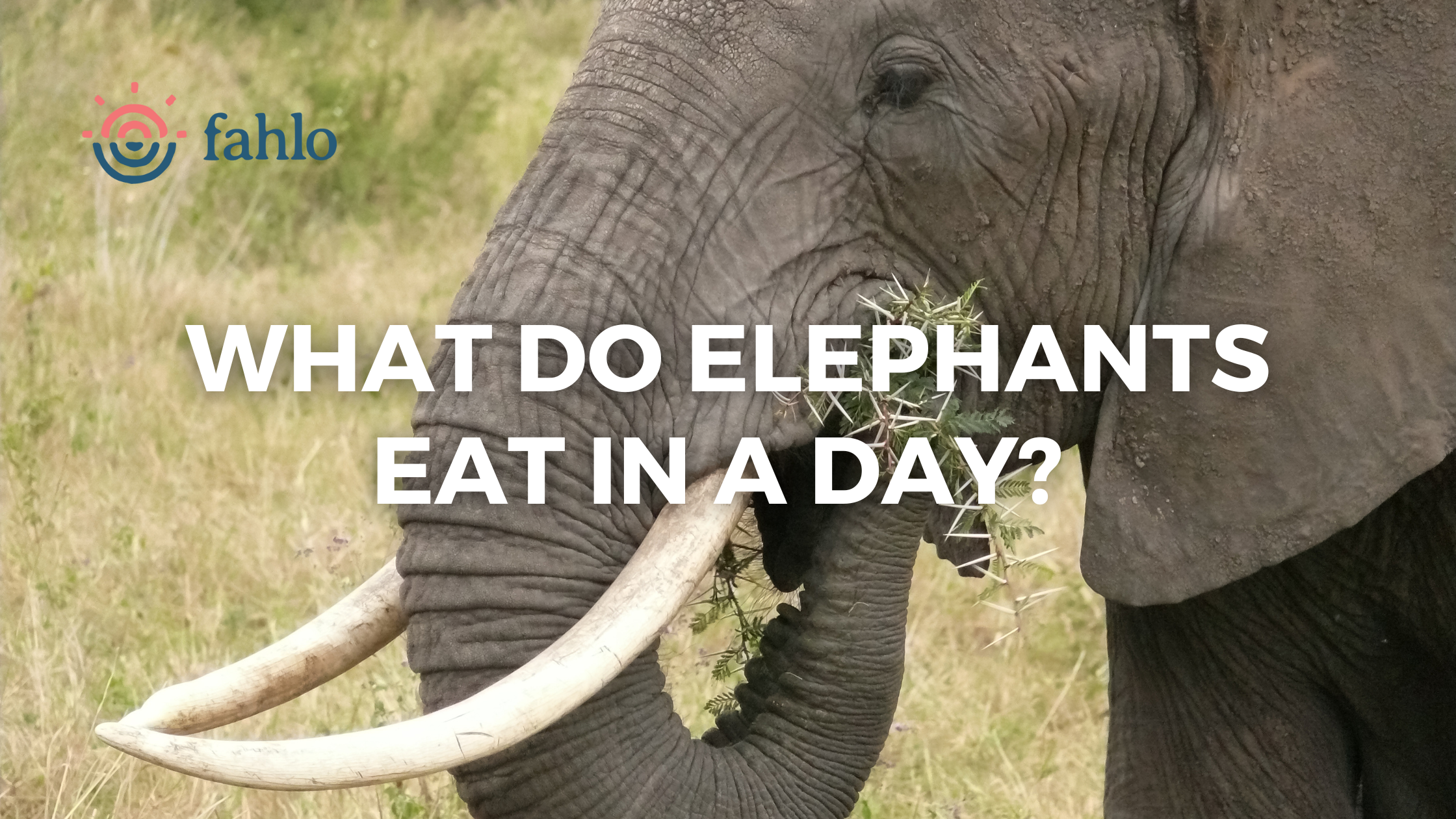
If you’ve ever wondered, “what do elephants eat in a day?,” the answer is easy...a lot! Elephants are one of the largest animals on Earth, and they require a lot of food in order to get enough calories and nutrients to keep them moving throughout the day while sustaining their mass. Researchers found that on average, an elephant consumes up to 440 pounds of food per day as well as 59.4 US gallons of water per day. They can spend upwards of 18 hours grazing per day, but what exactly does an elephant’s diet consist of? Let’s find out!
At a Glimpse: Elephant Digestion
Like deer, cows, giraffes, and camels, elephants are herbivores, meaning that they only eat plant matter. However, unlike cows who have four stomachs, elephants only have one, like us. This means that digestion requires a lot of energy and it can take days for food to be processed. Their stomachs are not very efficient, meaning that less than 50% of food consumed is able to be used by their bodies while the rest becomes waste. As for what exact plants an elephant eats, it depends on environmental factors such as vegetation type, seasonal changes, and conditioning as they were growing up. The African elephant diet is different from the Asian elephant diet, though they do share some foods in common.
What Do Elephants Eat Exactly?
African Bush Elephant Diet
Also known as African Savanna Elephants, African Bush Elephants are not only the largest of all elephants, but also the largest land mammal in existence. They can weigh up to 11 tons and be as long as 24 feet. They can be found in many African countries, but are most heavily concentrated in the Southern and Eastern parts of the continent. For example, there are large herds in Botswana, Tanzania, Kenya, Zimbabwe, and South Africa, among others countries. Primarily, the African elephant diet consists of grass, but they will also eat bark, leaves, and shrubs. Grass is the easiest to fill up on, while bark is significantly harder because it requires the elephant to use its tusk to pry the bark from a tree.
African Forest Elephant Diet
Smaller, with more oval-shaped ears and straight tusks, African Forest Elephants predominantly reside in the rainforests of Africa, as their name suggests. In the forest, they have access to a lot of different types of plant matter, from leaves to bark and beyond. In comparison to the African Bush Elephant, this elephant’s diet consists of a lot more fruit as well as seeds that they pull from trees. In eating the seeds and eventually passing them through their digestive system, these elephants help pollinate the forest. They are very important to keeping their ecosystem alive, yet sadly, these elephants are critically endangered. With a slow rate of reproduction, it will take a long time for them to recover as a species.
Asian Elephant Diet
Found in India and Southeastern Asian countries like Borneo and Sumatra, Asian Elephants also feed on grasses, roots, leaves, seeds, bark and fruit, with a few location-specific additions. These sociable elephants have access to rice, bananas, and sugarcane, all of which they love to eat. However, their appetite for these heavily farmed crops means that they can get into conflict with farmers, placing them in danger. While not as endangered as African Forest Elephants, there are fewer than 50,000 Asian Elephants left in existence.
Support and Learn More About Elephants
While you might not be prepared to hop onto the next flight to see these elephants in person, you can follow them right from home. Designed in partnership with Save the Elephants in Kenya, The Expedition elephant tracking bracelet by Fahlo supports elephant conservation and research. Not only is it a stylish treasure, but the elephant bracelet comes with live tracking info so that you can follow an elephant in the wild. You’ll learn more elephant diet facts without ever leaving your house, plus you’ll have a beautiful bracelet to remind you of how you are making a difference.